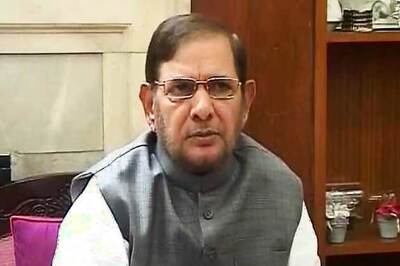
views
Every year the Monsoon unfailingly causes widespread havoc and devastation across the country. What safeguards need to be taken against Monsoon losses? Vinod Chandra Menon, former member of National Disaster Management Authority, joined IBNLive readers for an interaction on the issue.
Q. What safeguards need to be taken against Monsoon losses? Asked by: Sneha
A. We need to ensure that the mass housing schemes of the Government of India like Indira Awas Yojana, Rajiv Awas Yojana and flagship projects like MGNREGA, Pradhan Mantri Grammen sadak Yojana, and other infrastructure projects incorporate flood-resistant features in construction. We also need to make sure that no construction is allowed in the red zones in the catchment areas of rivers as indicated in the land use plans. Structural safety audits of lifeline structures also need to be carried out in areas prone to river erosion and flash floods.
Q. Why are we never ready for the Monsoon? Asked by: Isha
A. I think the culture of reacting after a disaster event is still prevalent in many parts of the country. We are slow in implementing disaster risk reduction and mitigation measures. there is also reluctance in strengthening disaster preparedness. We can be ready for monsoons by cleaning the drains, desilting channels, etc. before the monsoons.
Q. In Mumbai, I feel it is sheer apathy of BMC not to get the storm drains desilted and also keep the diesel pump sets in working order and position them at short notice. Your views please. Asked by: Sudarsanam
A. There is a need for greater civic consciousness to put pressure on ULBs and Local Administration Authorities to take sufficient steps to strengthen disaster risk reduction and mitigation. Accountability has to be brought in among all stakeholder groups who have the mandate to assure safety of citizens in disaster-prone areas.
Q. What is wrong with our urban planning? Asked by: Pawan
A. Many of our megacities and large urban conglomerates are not designed for the amenities, infrastructure and facilities for large populations and high density clusters. Most of these cities are growing vertically. Facilities like solid waste management, proper drainage, safe disposal of hazardous waste, etc. are challenges in many cities. Transportation, infrastructure like flyovers, parking facilities, parks and recreation grounds, etc. are also major constraints.
Q. Your advise to the citizens? Asked by: Sneha
A. Citizens need to be more proactive, aware of their rights and assertive.
Q. Should govt rope in Corporate sector in innovative management? Asked by: fatima
A. All stakeholders need to be involved in visioning a safe and disaster resilient nation. We need to be more pro-active, and insist on accountability by bureaucrats and decision makers.
Q. What should the govt do about Monsoon mayhem? Asked by: Anuj
A. Anticipatory governance measures like pre-monsoon planning exercises, strict enforcement of land use planning and building bye-laws, participatory problem solving by involving all stakeholders, etc. can go a long way in reducing the adverse impact of floods. Most of the monsoon mayhem is largely due to man-made factors, which can be easily addressed if there is commitment and conviction.
Q. Why there is less damage-both of properties and human lives- in foreign countries in natural calamities? Is it due to wide spread corruption and lack of political will to curb the same in our country? Asked by: Shyam Vadalker
A. In most advanced countries, there is greater awareness about pre-disaster preparedness, disaster risk reduction, mitigation and prevention. We still continue to respond after the event. Since our preparedness is weak, our post-disaster response, rehabilitation and recovery also become weak and inefficient.
Q. Can making Rain water harvesting mandatory make our cities better prepared to face the monsoons? Asked by: Aditya
A. Rainwater harvesting is often cited as a solution to improve the ground water table.So it is more of a drought preparedness measure. However, some countries have attempted to puncture ground water aquifers by diverting the flood waters to them. We need to understand the technology and the science of doing it efficiently to recharge the ground water and simultaneously address the flood impact.
Q. Has situation changed in last 10 years? For better or worse? Asked by: Sasi
A. After the Indian Ocean Tsunami of December 2004 and the enactment of the Disaster Management Act 2005 and the establishment of NDMA at the national level, SDMAs at the state levels and DDMAs at the district levels, some positive changes have happened. The NDRF has become a dedicated serach, rescue and evacuation force, the only one of its kind in the world. The mitigation projects for cyclone has been in operationin the first phase along with a School Safety Project and Earthquake Risk Mitigation project. These are positive developments.
Q. What changes are required to tackle monsoon? Asked by: Kamya
A. We need to develop a Culture of Preparedness and develop local capacities to address the adverse impact of floods. The land use planning in flood-prone areas need to be strictly enforced with no construction in the erosion-prone areas and submergence zones. We need to also use techniques like remote sensing, digital elevation modelling, contour mapping, etc. to carry out scenario analysis and take anticipatory steps to reduce the impact.




















Comments
0 comment